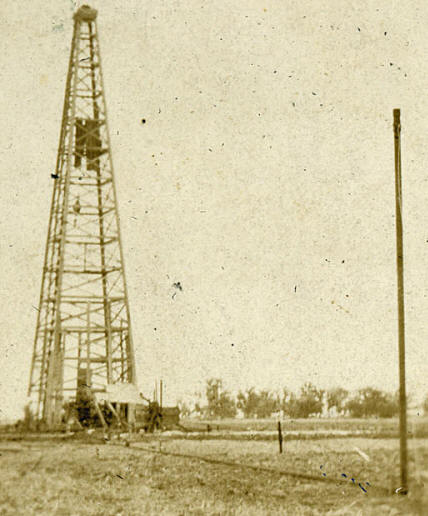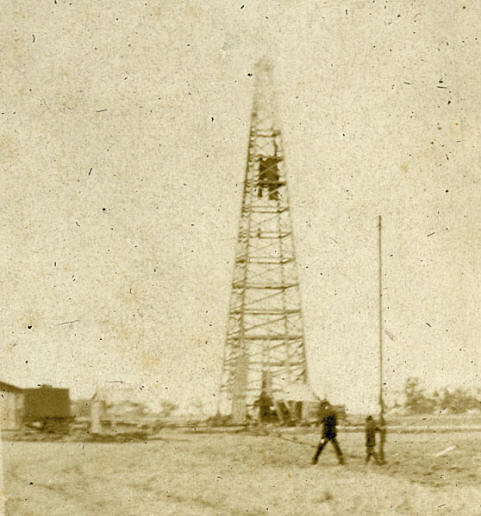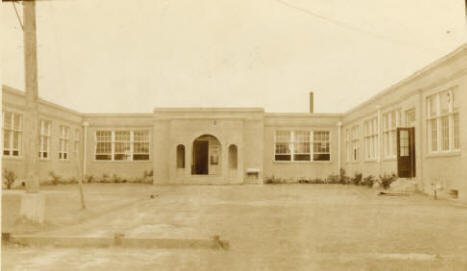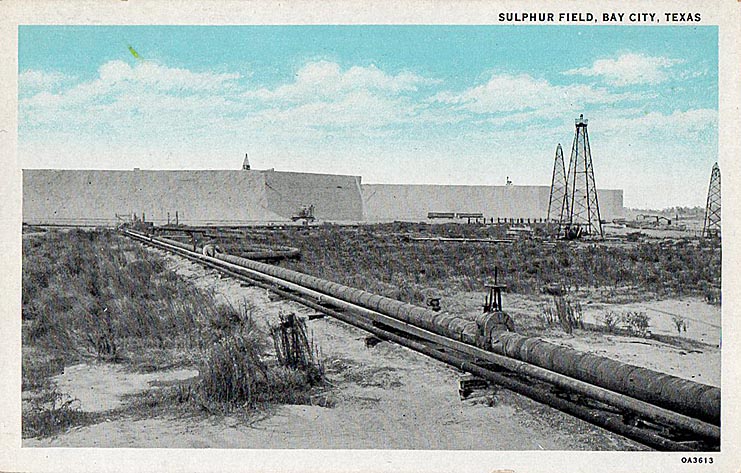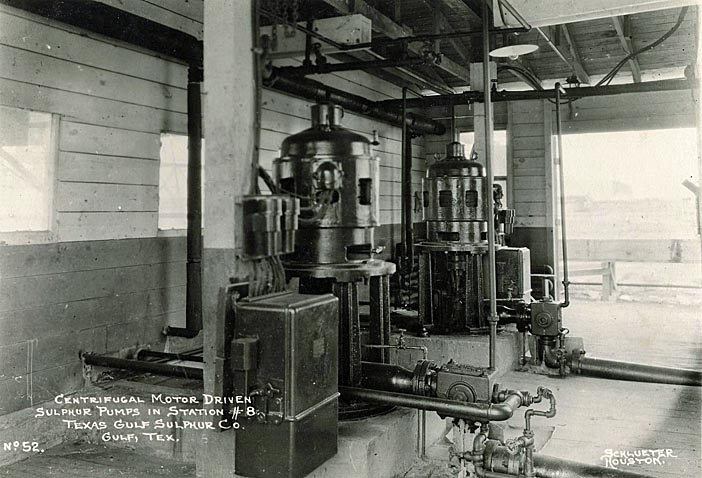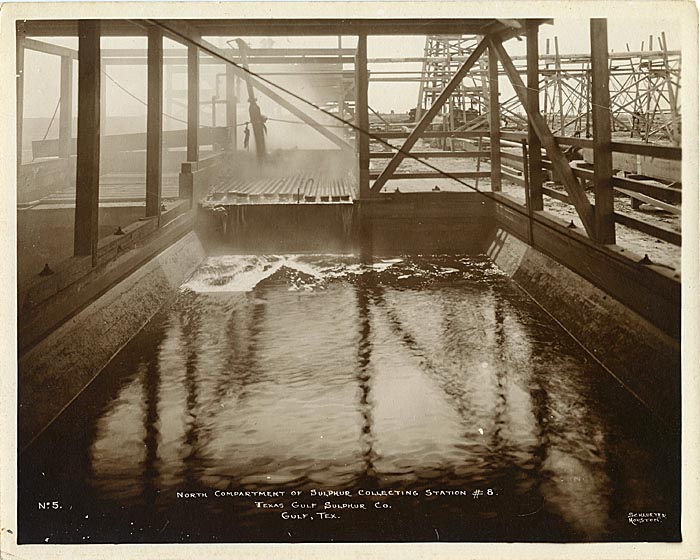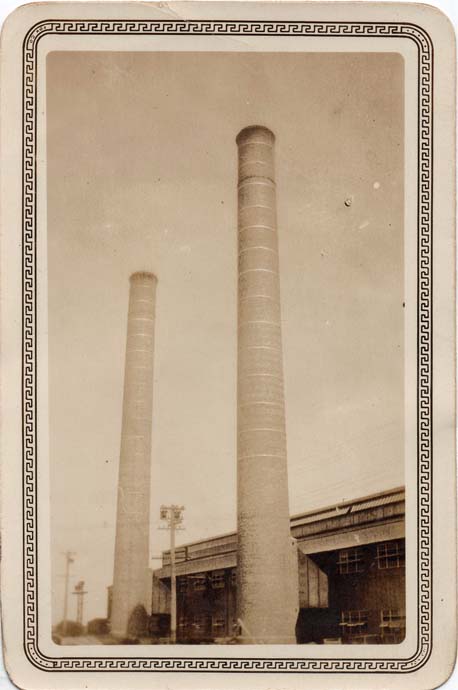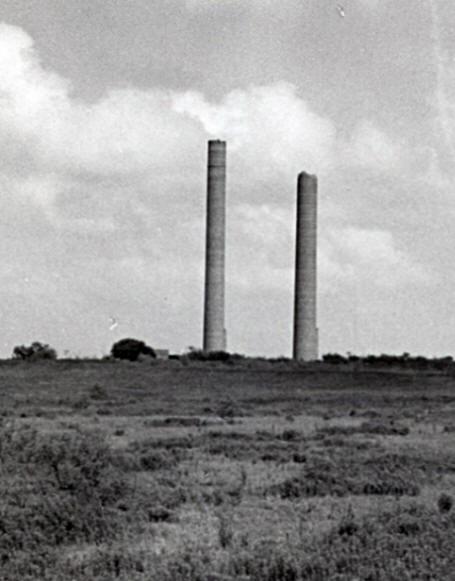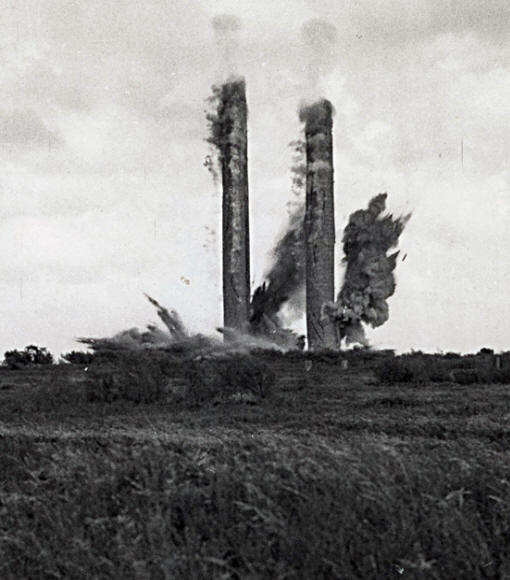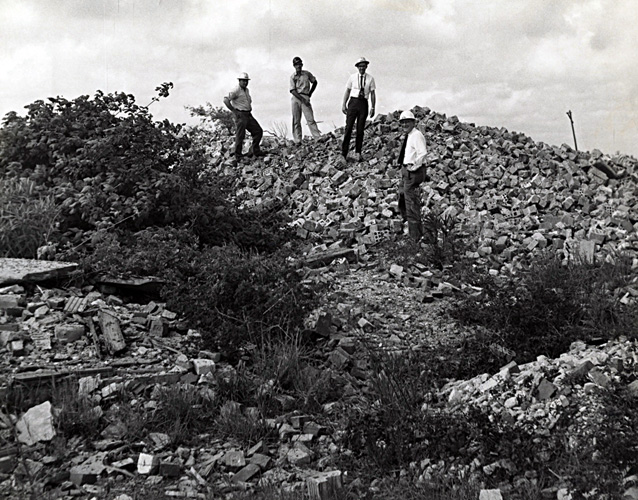|
Gulf Information |
||||
|
||||
|
||||
|
Gulf, now called Old Gulf, and formerly called Big Hill, is no more. Big Hill was a dome-like land surface, approximately sixty feet high, situated east of Matagorda, along the Intracoastal Canal where it opens into East Matagorda Bay. In 1833 William Simpson received this land from the Mexican government. It is so noted on the map of the 1839 land grants of Matagorda County. In 1836 half of the league went to I. R. Lewis and, in 1846, Lewis' part passed to a Mr. Bryan. It 1847 Freudenthal became owner. From 1848 to 1851, his taxes became delinquent, and the land was claimed by the state and then sold to a Mr. Shulter. He also let the land become delinquent in taxes, and the state again claimed the land and sold it to an unknown purchaser. In 1877 Christian Zipprian bought the land for $1,242 and sold half to his sister, Catherine Williams. In 1881 the Freudenthal heirs laid claim and sued Zipprian and Williams for possession of the land. The Freudenthal heirs won the suit, and Zipprian and Williams had to pay them $350 for a quit claim deed. Then the Shulter heirs laid claim and sued for possession. Again, Zipprian and Williams paid $1,200 for another quit claim deed. This settlement gave Zipprian and his sister an undisputed claim to the land, which consisted of some 2,214 acres. They had to purchase the land three times at a total cost of $2,842--or about $1.25 per acre. In 1901 when the county became an active source of oil exploration, William Cash of Bay City began looking for hills on the topography of the flat coastal prairie. He leased some of the this land and also made some purchases. He negotiated with others in the petroleum business, and they bought a rig and began drilling for oil. They brought in a gas well, but this was no concern to them. They brought in water, and they brought in wells with sulphur water, but they wanted oil. Others also leased the land and drilled. Among these were John Sutherland and T. S. Griffin, who decided to develop the Big Hill Field in 1904. Their first well went through ninety-three feet of pure sulphur, but produced no oil. They did drill some wells that produced oil, but production turned to salt water in a short time. Sutherland attempted to pump several wells by means of windmills, but when a hurricane hit in 1905, it destroyed the windmills and the derricks. Sutherland quit the project. Sutherland was aware of the sulphur, and with Dr. P. S. Griffith, Captain John Sargent, and B. A. Ryman, he organized the Matagorda Oil Company with the ides of showing the sulphur exploration crews that the mineral was there. Then eventually sold their company interest to Gulf Sulphur Company. A corporation called Gulf Sulphur Company was formed in 1909. The original incorporators were: A. C. Einstein, J. W. Harrison, Theodore F. Meyer, and I. M. Allen (all of St. Louis, Missouri) and local incorporators Hugo Spitzer and R. O. Middleton of Matagorda, E. B. Pickett of Liberty, and John M. Corbett and John Sutherland of Bay City. Since the corporation was formed, the partners were quietly buying the fee title to the land on Big Hill for $300 per acre. This continued until 1919, and then the production activity began. Gulf Sulphur Company became Texas Gulf Sulphur Company and began the operation of mining sulphur. The company established the mine, hired employees and laid out a townsite. They create a town completely owned by the sulphur company, which they called Gulf. This business boosted the economy of Matagorda County by supplying jobs for the people and also bringing new families into the county. Operation began March 19, 1919, and the first twenty-five employees were: W. H. Chatham, W. O. Clements, J. C. Cox, H. C. Crawford, J. D. Deshotels, Oscar Groves, E. J. Howard, Irma B. Hustead, W. H. Kelly, C. A. McGuire, C. M. Massey, L. L. O'Neal, Sr., Jay Parker, E. E. Pearce, George Raymond, J. E. Rupe, Austin Savage, Muta C. Serrill, Guy Smith, L. W. Spray, H. E. Treichler, J. F. Willy, Albert C. Wolf, J. K. Wood and H. B. Wooley. The company built a modern city on the site for its employees with surfaced roads, water system, electricity, natural gas, stores, school, hospital, community center, pavilion and dairy. They also provided all the maintenance that the town required by employing a person to handle the job. The company even owned buildings which they leased for businesses. The first house was built July 16, 1918. Houses of all sizes were built by the employees, and they built a house a day. The houses were modern , normally with two bedrooms, a kitchen, and a living room, with one bath. Houses were rented to the employee for $5.00 per room and $2.50 for a porch. Utilities were furnished until 1929, when the rule changed to make the tenants pay for electricity. What had been a well-lighted town became a quite dark town at night. Only the higher-salaried personnel could afford one of the larger more tasteful homes. Some families doubled up in one house in order the share the cost. A small park and a community garden were laid out near the business district. The grounds of the town (mainly the park) were tended by a person named Desborough Hanson (born 1872, died 1956, buried Matagorda Cemetery). Hanson kept flowers blooming and even installed a sprinkler system. He also was the overseer of the community garden. Residents were supplied with water from two reservoirs. One was from a well and used for household purposes, and one was used by the sulphur plant. Electricity was supplied by the plant's own system. C. W. Smith owned a grocery with Bill Pump as butcher; a Mr. Smith, a confectionary; a Mr. Rogers, a cafe; C. J. Stewart, a dry goods store; a Mr. Oliver, a cleaning and pressing shop; and Charlie Curtis, a barber. There was a drug store in which Clarence Baade was a clerk. There was also a service station and garage and a movie theater. The theater was run by a Mr. Marshall. They had silent movies until 1928, and then there were the "talkies." The hospital was a wooden building with approximately ten rooms and an operating room. The doctors serving it were Dr. Bomar, Dr. James Simons and Dr. F. E. Dye. On the bay was a dance pavilion which Bob Rudin managed. This was a place of many pleasant evenings, enjoyed by residents of the county. There was a community house in which social gatherings were held. A modern brick school was built by the Independent School District, organized by the citizens. It was composed of primary through high school grades, and students came from the surrounding areas to attend. Sports were a big event; the school and the sulphur company had teams that were considered the best in the county. Residents were supplied with dairy products from the company dairy on the outskirts of town. Harry Culver was manager of the dairy. The company owned a railroad two and one-half miles long, over which the sulphur trains hauled the yellow mineral before transferring it to the Santa Fe railroad. They also shipped sulphur by barge on the waterway. The Texas Gulf Sulphur Plant consisted of a power-plant, machine shop, warehouses, roundhouse for two locomotives and office buildings. G. Clifford Ryman was appointed postmaster for Gulf in 1918, followed by Leslie H. Duffy in 1919 and Miss Willie L. Gottschalk in 1922. Miss Gottschalk became Mrs. Davidson while she served as postmaster. Sulphur mining operations in Gulf covered the years from March 19, 1919, through September 19, 1932. At this time, the plant at Newgulf in Wharton County had been producing sulphur, and many of the Gulf employees were transferred to the Newgulf plant. The Gulf plant was reopened in January of 1936, but ceased operations in August of that same year. Because everything was company-owned, the town of Gulf also ceased operations--gradually, over a few years. Many of the houses were moved to Newgulf, many were purchased by citizens of the area and moved to new sites. Soon all that remained of the town were the twin smokestacks of the plant. The smokestacks were used as a landmark by those in boats on the water south of this area, as they stood 210 and 212 feet tall. Because of damage from Hurricane Carla even the smokestacks had to go eventually, and, in 1964, they were dynamited, and the bricks were used as rip rap for the new Port of Bay City. The Texas Gulf Sulphur Company continues to own the land and attempted to put the plant back into operation in 1965--even building a new power plant--but this effort ceased in October of 1969*. It is now a large sunken reservoir filled with water providing a home for birds and wild animals in the area. It is no long the Big Hill. Historic Matagorda County, Volume I, pages 339-342 *5 years produced about 500,000+ long tons--per Doris Bell Moberley Typed by Henry Hanson
See
Gulf
For Kids
to view photos of many items mentioned in the history. |
||||
|
|
||||
|
|
||||
|
|
||||
|
||||
|
|
||||
